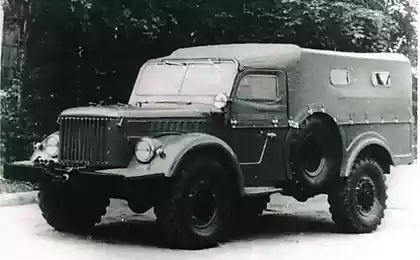196
Homemade Torch 1000 Lumina.
Recently to us from China came to the company high-brightness LEDs CREE (model XM-LH).
According to the data of the passport manufacturer promised brightness of 1000 lm (almost brightness 100 watt incandescent lamp) with power consumption of 10 watts. In other words, the brightness is 100 lm / W, which is by far one of the best indicators. In addition the firm LEDs CREE, again according to the datasheet they have a pretty wide range, without significant failures. Thus, their use as light sources in the home, in my opinion, is completely due to, because of their long life (MTBF of 20 000 -75 000 hours) But it's the lyrics directly to the topic.
LED printed, smeared thermal compound, bolted to the first that fell radiator, medium size and is connected via an ammeter to a voltage source. Enabling and smooth increase in voltage with constant control current. The brightness of the LED is impressive. Luminous flux due to scattering lens evenly illuminates the room. Look at the LED impossible - very blinding. The first experiment is successful. And then we came across Duracell flashlight with a light bulb, and without batteries. It was decided at any cost to turn it into a pocket spotlight.

As a source of power decided to use a Li-ION cell.
The voltage on a charged cell about 3, 7-3, 8 W., which is enough to power the LED. Power output for this was in the region of 9, 7, Vt., Which we felt quite sufficient, and taking into account the very limited space in the housing lantern, decided not to use the chip - the driver for power LEDs, even at the expense of maximum illumination time, and maximum brightness, but it saved precious space.

The second problem - a high heat dissipation of the LED. Which radiator use? No suitable finished radiator we have not found, and found nothing better than otkromsat piece from an old radiator on the processor P-IV on the S- 478. The piece appeared noble, and for a long time it had to process a file, to shape, internal repeats the outlines of a flashlight. Finally, the radiator is made, set on LED sighting on it in such a way to be in the center of the reflector flashlight design began to resemble a prototype.

continued
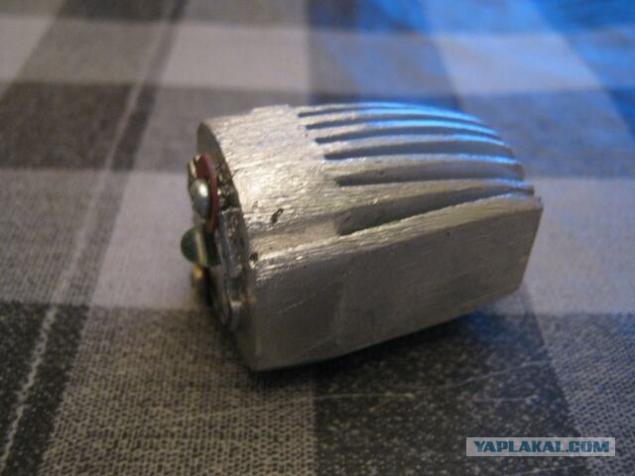
continuation 2
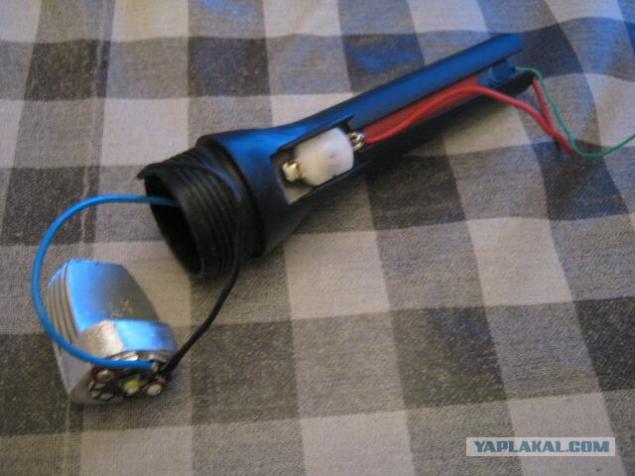
With a sinking heart I press the power button ...
It is alive!
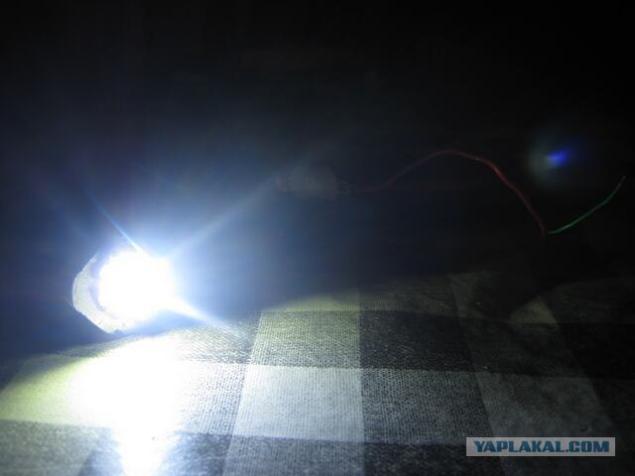
Next trick and improvised parts. The battery is soldered to the LED through a push-button torch, through the diode soldered connector for charging the battery, all packed tightly into the body and collected. The result had been no different from the original lamp from the outside.

continued

Behind the lead connector to connect to the charger has turned quite ugly, but nothing can be done ... rubber, cut badly.
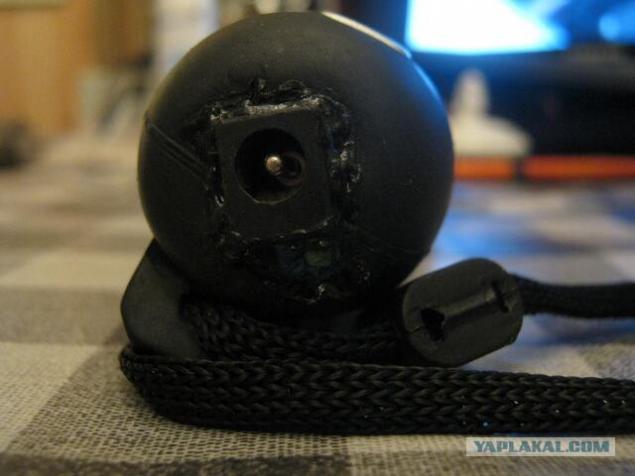
And now the most interesting field trials! Time after nine hours of twilight. The camera is placed in the manual mode, and exposure are fixed.

continued

But Comparable to conventional LED lights, which now have virtually everyone.
Posted in [mergetime] 1311146888 [/ mergetime]
Hours torch was about 1 hour to discharge the body by the end of the test is quite warmed up, but the heat sink temperature (75 degrees) was found still well below the limit temperature for the LED (125 degrees) Well, the housing temperature outside did not rise above 45 degrees. Thus our radiator was able to provide long-term operation of the LED, in quite comfortable conditions for it.
Conclusions: To date, the LEDs have come to the turn, after which they will be able to unconditionally displace incandescent bulbs everywhere. At the moment, the use of super-bright light-emitting diodes are most justified in small light sources, which are subject to high demands for compactness, efficiency and effectiveness. If we talk about the application of LED lighting in the household, then I think you should pay special attention to the dispersion of light they emit, otherwise there is a risk of harm the visual organs.
Posted in [mergetime] 1311146917 [/ mergetime]
taken from here:
big-led.ru/diy/samodelnyj-fanarik-na-1000-lyumin/
All
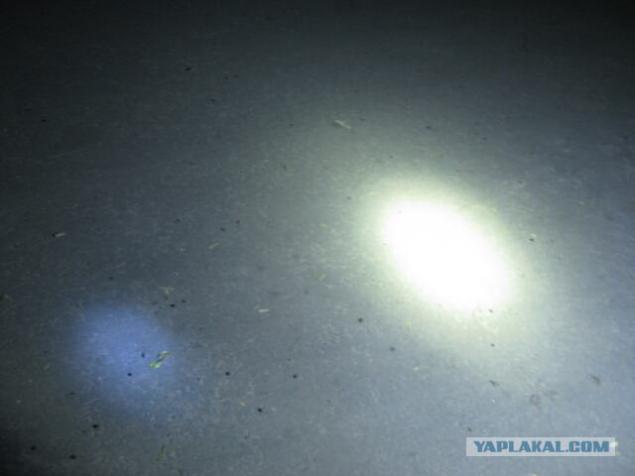
Source:
According to the data of the passport manufacturer promised brightness of 1000 lm (almost brightness 100 watt incandescent lamp) with power consumption of 10 watts. In other words, the brightness is 100 lm / W, which is by far one of the best indicators. In addition the firm LEDs CREE, again according to the datasheet they have a pretty wide range, without significant failures. Thus, their use as light sources in the home, in my opinion, is completely due to, because of their long life (MTBF of 20 000 -75 000 hours) But it's the lyrics directly to the topic.
LED printed, smeared thermal compound, bolted to the first that fell radiator, medium size and is connected via an ammeter to a voltage source. Enabling and smooth increase in voltage with constant control current. The brightness of the LED is impressive. Luminous flux due to scattering lens evenly illuminates the room. Look at the LED impossible - very blinding. The first experiment is successful. And then we came across Duracell flashlight with a light bulb, and without batteries. It was decided at any cost to turn it into a pocket spotlight.

As a source of power decided to use a Li-ION cell.
The voltage on a charged cell about 3, 7-3, 8 W., which is enough to power the LED. Power output for this was in the region of 9, 7, Vt., Which we felt quite sufficient, and taking into account the very limited space in the housing lantern, decided not to use the chip - the driver for power LEDs, even at the expense of maximum illumination time, and maximum brightness, but it saved precious space.

The second problem - a high heat dissipation of the LED. Which radiator use? No suitable finished radiator we have not found, and found nothing better than otkromsat piece from an old radiator on the processor P-IV on the S- 478. The piece appeared noble, and for a long time it had to process a file, to shape, internal repeats the outlines of a flashlight. Finally, the radiator is made, set on LED sighting on it in such a way to be in the center of the reflector flashlight design began to resemble a prototype.

continued

continuation 2

With a sinking heart I press the power button ...
It is alive!

Next trick and improvised parts. The battery is soldered to the LED through a push-button torch, through the diode soldered connector for charging the battery, all packed tightly into the body and collected. The result had been no different from the original lamp from the outside.

continued

Behind the lead connector to connect to the charger has turned quite ugly, but nothing can be done ... rubber, cut badly.

And now the most interesting field trials! Time after nine hours of twilight. The camera is placed in the manual mode, and exposure are fixed.

continued

But Comparable to conventional LED lights, which now have virtually everyone.
Posted in [mergetime] 1311146888 [/ mergetime]
Hours torch was about 1 hour to discharge the body by the end of the test is quite warmed up, but the heat sink temperature (75 degrees) was found still well below the limit temperature for the LED (125 degrees) Well, the housing temperature outside did not rise above 45 degrees. Thus our radiator was able to provide long-term operation of the LED, in quite comfortable conditions for it.
Conclusions: To date, the LEDs have come to the turn, after which they will be able to unconditionally displace incandescent bulbs everywhere. At the moment, the use of super-bright light-emitting diodes are most justified in small light sources, which are subject to high demands for compactness, efficiency and effectiveness. If we talk about the application of LED lighting in the household, then I think you should pay special attention to the dispersion of light they emit, otherwise there is a risk of harm the visual organs.
Posted in [mergetime] 1311146917 [/ mergetime]
taken from here:
big-led.ru/diy/samodelnyj-fanarik-na-1000-lyumin/
All

Source:









